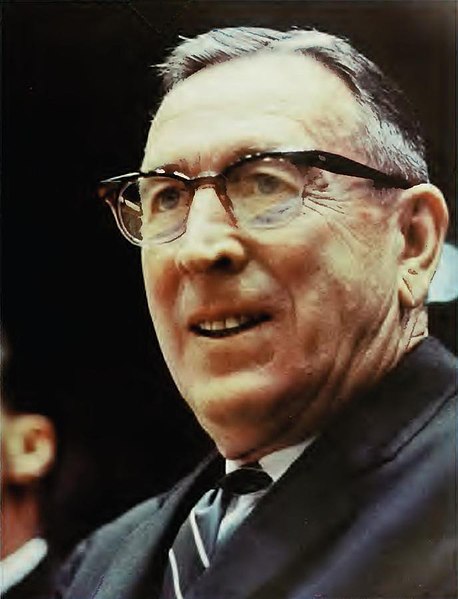Unleashing Leadership Excellence: Lessons and Stories from Tim Ferriss

Unveiling the Secrets of Tim Ferriss’ Leadership Journey
In the realm of personal development and leadership, few individuals have captured the attention and admiration of millions quite like Tim Ferriss. With his unwavering dedication to experimentation, self-improvement, and unconventional thinking, Ferriss has become a leading authority in the field, transforming the way people approach their personal and professional lives. Over the course of his remarkable career, he has amassed a treasure trove of wisdom and invaluable insights that resonate with aspiring leaders around the globe.
Effective leadership is a multifaceted and dynamic art, requiring a combination of skills, qualities, and experiences. It is the ability to inspire, guide, and motivate individuals and teams toward a common goal, while fostering a culture of collaboration, innovation, and growth. While leadership principles can be studied and taught, true mastery often comes from learning through the experiences and stories of exceptional leaders themselves.
In this article, we delve into the world of leadership lessons and stories of one such exceptional leader—Tim Ferriss. While Ferriss is widely recognized for his groundbreaking books such as “The 4-Hour Workweek,” “Tools of Titans,” and “Tribe of Mentors,” as well as his highly popular podcast, “The Tim Ferriss Show,” it is his unique perspective on leadership that sets him apart.
Ferriss’ journey toward becoming a thought leader and influencer in the realm of personal development and leadership has been nothing short of extraordinary. His own experiences, triumphs, and challenges have shaped his leadership philosophy, leading him to uncover profound insights that resonate with individuals from all walks of life. By examining the lessons he has learned along the way and the stories that have shaped his perspective, we can glean a wealth of knowledge and inspiration that can propel us forward on our own leadership journeys.
Throughout this article, we will explore five key leadership lessons and stories from Tim Ferriss that highlight the transformative power of his approach. These lessons encompass a range of critical areas, from embracing fear and taking calculated risks, to the power of effective communication, continuous learning and personal growth, building and leveraging networks, and achieving work-life balance and well-being.
Each lesson will be accompanied by real-life examples from Ferriss’ own experiences, providing concrete illustrations of how these principles have influenced his own leadership style and contributed to his success. By examining these lessons in detail, we can extract valuable insights, practical strategies, and actionable advice that can be applied to our own leadership journeys, regardless of our industry or professional aspirations.
As we embark on this exploration of Tim Ferriss’ leadership lessons and stories, it is important to note that leadership is a deeply personal and evolving endeavor. While there is no one-size-fits-all approach, Ferriss’ unique perspective offers a wealth of knowledge that can help us navigate the complexities of leadership and inspire us to push boundaries, challenge conventional wisdom, and embrace a mindset of continuous growth and improvement.
So, join us as we delve into the captivating world of Tim Ferriss’ leadership insights. Through his stories and experiences, we will unlock a treasure trove of wisdom, guiding us on a path to becoming more effective, influential, and inspiring leaders in our own right.
Background of Tim Ferriss
To truly understand and appreciate the leadership lessons and stories of Tim Ferriss, it is essential to delve into the background of this remarkable figure. With his unconventional approach to life and unrelenting pursuit of personal growth, Ferriss has carved out a unique niche in the world of personal development and leadership.
Ferriss’ journey began in East Hampton, New York, where he was raised in an intellectually stimulating environment. His early exposure to diverse ideas and cultures fostered a curiosity and thirst for knowledge that would shape his future endeavors. After completing his studies at Princeton University, where he earned a degree in East Asian Studies, Ferriss embarked on a path that would lead him to become a successful entrepreneur, author, and sought-after public speaker.
It was in 2007 that Ferriss burst onto the scene with the release of his groundbreaking book, “The 4-Hour Workweek.” This manifesto challenged conventional notions of productivity, work-life balance, and success. The book quickly became a bestseller, capturing the attention of individuals yearning for a more fulfilling and balanced approach to their professional lives. Ferriss’ unique blend of entrepreneurial insights, lifestyle design principles, and self-improvement strategies struck a chord with readers worldwide, catapulting him into the spotlight as a leading voice in personal development.
Building upon the success of his debut book, Ferriss continued to push the boundaries of conventional thinking with subsequent publications. His follow-up works, including “The 4-Hour Body” and “The 4-Hour Chef,” explored topics ranging from physical fitness and nutrition to culinary mastery. Through these books, Ferriss showcased his dedication to experimentation, self-optimization, and learning from a diverse range of experts and mentors. His ability to distill complex topics into practical and actionable advice further solidified his reputation as a thought leader in the realm of personal development.
Beyond his written works, Ferriss expanded his reach through the power of the podcast medium. “The Tim Ferriss Show,” launched in 2014, quickly rose to prominence as one of the most popular and influential podcasts worldwide. With a diverse range of guests, including world-class performers, entrepreneurs, scientists, and artists, Ferriss engaged in deep and thought-provoking conversations that explored the strategies, habits, and mindsets of high achievers in various fields. Through his skillful interviewing style, he unearthed the secrets behind their success, shedding light on the principles and practices that can be adopted by individuals seeking to excel in their own lives and leadership roles.
What sets Ferriss apart as a thought leader and influencer in the realm of personal development and leadership is not only his ability to communicate complex ideas with clarity but also his unwavering commitment to experimentation and self-improvement. Ferriss approaches life and leadership as an ongoing process of iteration and refinement, constantly seeking new insights, perspectives, and strategies to optimize performance and well-being.
His philosophy is deeply rooted in the belief that embracing discomfort, pushing boundaries, and challenging preconceived notions are essential ingredients for growth and success. Ferriss’ own experiences with fear, failure, and vulnerability have shaped his leadership style, imbuing it with authenticity, empathy, and a profound understanding of the human condition.
As we embark on this exploration of Tim Ferriss’ leadership lessons and stories, we do so with the knowledge that his unique background, relentless pursuit of excellence, and unyielding commitment to self-improvement make him an ideal subject for uncovering the secrets of effective leadership. Through his unconventional path and extraordinary achievements, Ferriss has not only inspired countless individuals to challenge the status quo but has also provided a blueprint for those seeking to lead with purpose, authenticity, and unwavering dedication.
Join us as we journey deeper into the leadership lessons and stories of Tim Ferriss, uncovering the profound insights that have the potential to transform the way we approach leadership in our own lives. From embracing fear and taking calculated risks to the power of effective communication, continuous learning, networking, and work-life balance, Ferriss’ experiences and principles serve as guiding beacons, illuminating the path toward leadership excellence.
Lesson 1: Embracing Fear and Taking Calculated Risks
One of the most profound lessons we can learn from Tim Ferriss’ leadership journey is the importance of embracing fear and taking calculated risks. Throughout his career, Ferriss has demonstrated a remarkable ability to confront and navigate fear, allowing it to become a catalyst for growth and achievement.
Ferriss firmly believes that fear is an indicator of something significant—something worth pursuing. Rather than allowing fear to paralyze him, he has harnessed its power, recognizing that the greatest opportunities often lie just beyond our comfort zones. By embracing fear and stepping into the unknown, Ferriss has repeatedly discovered new avenues for personal and professional growth.
One striking example of Ferriss’ fear-conquering mindset is his own foray into the world of professional kickboxing. Despite having no previous experience in martial arts, Ferriss made the audacious decision to enter a kickboxing competition. His willingness to face fear head-on and step into the ring against experienced opponents showcased his unwavering determination and commitment to pushing his limits. While the endeavor was undoubtedly challenging, it taught Ferriss invaluable lessons about discipline, perseverance, and the importance of embracing discomfort for personal growth.
As aspiring leaders, we can apply this lesson to our own lives by reframing our relationship with fear. Instead of viewing fear as something to be avoided, we can see it as a signpost indicating areas of growth and opportunity. By recognizing and embracing fear, we can step into leadership roles with confidence and a willingness to take calculated risks.
Ferriss’ approach to risk-taking is also noteworthy. He advocates for a methodology he refers to as “fear-setting,” a process of carefully evaluating the potential risks and rewards of a particular course of action. This involves envisioning the worst-case scenarios, analyzing the likelihood of their occurrence, and identifying ways to mitigate potential negative outcomes. By taking the time to assess risks in a structured manner, Ferriss demonstrates that calculated risk-taking can lead to breakthroughs and transformative experiences.
Aspiring leaders can adopt Ferriss’ fear-setting framework by applying it to their decision-making processes. By carefully evaluating risks and rewards, considering alternative approaches, and developing contingency plans, leaders can make more informed decisions and navigate uncertainty with greater confidence.
Practical tips for embracing fear and taking calculated risks in leadership include cultivating a growth mindset, seeking discomfort deliberately, and surrounding oneself with a support network that encourages risk-taking. By developing these habits, leaders can push beyond their comfort zones, inspire their teams to explore new territories, and create an environment that fosters innovation and growth.
Tim Ferriss’ leadership journey teaches us the transformative power of embracing fear and taking calculated risks. By reframing our relationship with fear, adopting a fear-setting approach to decision-making, and actively seeking discomfort, we can unlock new opportunities for personal and professional growth. As aspiring leaders, let us embrace fear as a stepping stone toward realizing our true potential and making a lasting impact in our chosen domains.
Lesson 2: The Power of Effective Communication
Tim Ferriss’ leadership journey is punctuated by his exceptional communication skills, which have played a pivotal role in his ability to inspire, influence, and connect with others. Ferriss understands that effective communication is the bedrock of successful leadership, enabling leaders to articulate their vision, build trust, and foster meaningful relationships with their teams.
Ferriss possesses a unique ability to distill complex ideas into clear and concise messages that resonate with a broad audience. Whether through his books, podcasts, or public speaking engagements, he exhibits a remarkable talent for delivering information in a relatable and impactful manner. His communication style is characterized by simplicity, authenticity, and a genuine desire to connect with his audience.
An example of Ferriss’ exceptional communication skills is evident in his podcast interviews. Through thoughtful questioning and active listening, he creates an environment that allows his guests to share their insights and stories openly. By truly engaging with his guests and demonstrating a genuine curiosity, Ferriss creates a space for authentic and meaningful conversations that resonate with listeners. His ability to communicate effectively enables him to extract valuable knowledge and lessons from his guests, sharing them with his audience in a compelling and relatable way.
As leaders, we can learn from Ferriss’ approach to communication. Clear and concise messaging is essential for conveying our vision, goals, and expectations to our teams. By honing our communication skills, we can articulate our ideas with clarity, ensuring that our messages are understood and inspiring action in others.
Effective communication goes beyond the spoken or written word. Non-verbal communication, such as body language, tone of voice, and facial expressions, also plays a significant role in leadership. Ferriss understands the importance of non-verbal cues and leverages them to establish trust, foster connection, and convey empathy. By paying attention to non-verbal communication and being mindful of how we present ourselves, leaders can enhance their influence and establish a positive rapport with their teams.
To improve communication skills, aspiring leaders can practice active listening, seek feedback, and invest in emotional intelligence development. By genuinely listening to others, leaders demonstrate respect and create an environment that encourages open dialogue. Seeking feedback allows leaders to understand how their messages are received and make necessary adjustments to improve their communication effectiveness. Additionally, developing emotional intelligence enables leaders to empathize with others, understand their perspectives, and communicate in a way that resonates with different individuals and personalities.
Tim Ferriss’ leadership journey underscores the transformative power of effective communication. By adopting his principles of simplicity, authenticity, active listening, and non-verbal communication, leaders can enhance their ability to convey their vision, build trust, and foster meaningful connections with their teams. Through effective communication, leaders inspire and motivate, creating an environment where individuals can thrive and contribute their best. Let us embrace the power of effective communication as we strive to become impactful leaders in our respective domains.
Lesson 3: Continuous Learning and Personal Growth
At the heart of Tim Ferriss’ leadership philosophy lies an unwavering commitment to continuous learning and personal growth. Ferriss recognizes that leadership is not a destination but a lifelong journey of discovery, improvement, and adaptation. Throughout his career, he has embraced this ethos, constantly seeking new knowledge, experimenting with different approaches, and challenging himself to evolve as a leader.
Ferriss’ dedication to continuous learning is evident in his relentless pursuit of knowledge from a diverse range of sources. Whether it’s interviewing world-class performers on his podcast, immersing himself in new fields of study, or conducting self-improvement experiments, he consistently pushes the boundaries of his own understanding and capabilities. By doing so, Ferriss expands his knowledge base, gains fresh perspectives, and unlocks innovative ideas that fuel his personal and professional growth.
A notable aspect of Ferriss’ approach to continuous learning is his emphasis on the power of experimentation. He advocates for a “meta-learning” mindset, which involves treating life as a series of experiments aimed at uncovering optimal strategies for personal and professional success. Through these experiments, Ferriss discovers valuable insights, tests new hypotheses, and fine-tunes his approach to leadership.
One prominent example of Ferriss’ commitment to personal growth is his dedication to health and fitness. Recognizing the profound impact of physical well-being on overall performance, he has undertaken numerous self-experiments to optimize his own health and fitness routines. From experimenting with different exercise regimens to exploring nutrition and sleep optimization techniques, Ferriss constantly seeks to improve his well-being and energy levels, enabling him to lead with vitality and resilience.
As aspiring leaders, we can adopt Ferriss’ approach to continuous learning and personal growth by cultivating a growth mindset and embracing a learner’s mentality. A growth mindset recognizes that abilities and intelligence can be developed through dedication and effort. By viewing challenges as opportunities for growth, leaders can approach new experiences with curiosity, enthusiasm, and a willingness to learn from both successes and failures.
Additionally, incorporating deliberate practices of continuous learning into our daily routines can enhance our leadership effectiveness. This can include reading books and articles, attending workshops and conferences, seeking mentorship, engaging in reflective practices such as journaling or self-assessment, and actively seeking feedback from colleagues and team members. These practices not only expand our knowledge and skills but also foster a sense of humility and self-awareness, allowing us to continually refine our leadership approach.
It is also crucial to embrace experimentation and risk-taking as part of our personal growth journey. By stepping outside our comfort zones, trying new approaches, and embracing failure as an opportunity to learn, we unlock our potential for growth and innovation. Just as Ferriss has experimented with different methods and techniques, we can adapt his mindset of constant exploration to our own leadership journeys, remaining open to new possibilities and strategies.
In conclusion, Tim Ferriss’ leadership journey teaches us the immense value of continuous learning and personal growth. By adopting a growth mindset, embracing experimentation, and incorporating deliberate practices of continuous learning, leaders can cultivate a spirit of lifelong improvement. In doing so, they not only enhance their own effectiveness but also inspire and empower their teams to embrace a similar mindset of growth and development. Let us commit to the path of continuous learning and personal growth as we strive to become transformative leaders in our respective domains.
Lesson 4: Building and Leveraging Networks
One of the hallmarks of Tim Ferriss’ leadership approach is his emphasis on building and leveraging networks. Ferriss recognizes the immense value of relationships and understands that a strong network can be a catalyst for personal and professional growth. Throughout his journey, he has actively cultivated meaningful connections with individuals from diverse backgrounds, leveraging these relationships to gain insights, opportunities, and support.
Ferriss’ networking strategies are rooted in authenticity, reciprocity, and a genuine desire to connect with others. He values the power of building genuine relationships based on mutual respect and shared interests. By investing time and effort into nurturing these connections, Ferriss has created a network of mentors, advisors, and collaborators who have played a significant role in his own growth and success.
One notable aspect of Ferriss’ networking philosophy is his belief in the power of “one to many” relationships. He emphasizes the importance of seeking mentors and role models who can provide guidance and inspiration, even if the relationship is primarily through their work or public presence. By studying the successes and failures of these individuals, Ferriss gleans valuable lessons that inform his own leadership journey.
Ferriss also recognizes the value of surrounding oneself with a supportive peer network. He actively seeks out communities of like-minded individuals who share similar goals and aspirations. By connecting with others on a similar path, Ferriss fosters a sense of camaraderie and accountability, creating a support system that encourages growth and learning.
As aspiring leaders, we can adopt Ferriss’ networking principles to enhance our own leadership journeys. Building and leveraging networks can provide access to diverse perspectives, valuable knowledge, and opportunities for collaboration. Here are some strategies to consider:
-
Cultivate Authentic Relationships: Focus on building genuine connections based on mutual respect and shared values. Invest time in getting to know others and seek to understand their aspirations, challenges, and expertise.
-
Seek Mentors and Role Models: Identify individuals who have achieved success in areas of interest and learn from their experiences. Study their work, attend their talks or workshops, and seek opportunities to engage with them.
-
Foster Peer Networks: Engage with communities of like-minded individuals who share similar goals. This can be done through industry events, professional associations, or online platforms. Actively contribute to these communities and offer support to others.
-
Provide Value: Networking is a two-way street. Look for ways to offer support, knowledge, or assistance to others in your network. By providing value, you strengthen relationships and build a reputation as a trusted and reliable resource.
-
Embrace Diversity: Seek out connections with individuals from diverse backgrounds and fields of expertise. Embracing diversity expands your perspective, exposes you to new ideas, and enhances your problem-solving abilities.
By following these strategies, leaders can build robust networks that serve as sources of inspiration, guidance, and opportunities. However, it is crucial to approach networking with authenticity and genuine intent. Networking should be about fostering meaningful connections and supporting others, rather than solely seeking personal gain.
Tim Ferriss’ leadership journey highlights the power of building and leveraging networks. By cultivating authentic relationships, seeking mentors and role models, fostering peer networks, providing value, and embracing diversity, leaders can create a network that fuels their growth and opens doors to new opportunities. As we navigate our own leadership paths, let us recognize the immense value of relationships and commit to building networks that empower us and those around us.
Lesson 5: Work-Life Balance and Well-being
Tim Ferriss’ leadership journey underscores the importance of work-life balance and well-being as critical factors in achieving long-term success and fulfillment. In a world that often glorifies the hustle and sacrifices necessary for success, Ferriss advocates for a more holistic approach—one that prioritizes personal well-being, self-care, and a healthy work-life balance.
Ferriss recognizes that sustained high performance requires taking care of oneself physically, mentally, and emotionally. He emphasizes the need to prioritize self-care practices such as exercise, quality sleep, and stress management. By nurturing one’s well-being, leaders can enhance their ability to think clearly, make sound decisions, and maintain optimal levels of energy and resilience.
One of Ferriss’ own personal experiments that exemplifies his commitment to well-being is his exploration of different sleep patterns and sleep optimization techniques. Through rigorous self-tracking and experimentation, he has discovered the profound impact that sleep has on productivity, cognitive function, and overall well-being. This dedication to understanding and optimizing his sleep patterns reflects his belief in the transformative power of self-care practices.
In addition to self-care, Ferriss emphasizes the importance of setting boundaries and creating healthy work-life integration. He challenges the notion that success requires sacrificing personal well-being and advocates for a more balanced approach. By establishing clear boundaries, practicing time management, and prioritizing non-work activities, leaders can achieve a healthier equilibrium between professional responsibilities and personal life.
Ferriss also recognizes the value of periodically disconnecting and taking time for introspection and reflection. He advocates for the practice of “unplugging” from technology and creating space for quiet contemplation. This intentional disconnection allows leaders to recharge, gain clarity, and foster creativity.
As aspiring leaders, we can learn from Ferriss’ approach to work-life balance and well-being. Here are some strategies to consider:
-
Prioritize Self-Care: Make self-care practices, such as exercise, quality sleep, and stress management, non-negotiable components of your routine. Recognize that taking care of yourself is essential for long-term success and effectiveness as a leader.
-
Set Boundaries: Establish clear boundaries between work and personal life. Define designated times for work and allocate time for non-work activities that bring joy, relaxation, and fulfillment.
-
Practice Time Management: Adopt effective time management techniques to optimize productivity and ensure a healthy balance between work and personal life. Prioritize tasks, delegate when necessary, and create efficient systems that support your goals.
-
Disconnect and Reflect: Carve out regular periods for disconnection from technology and engage in introspection and reflection. This allows for rejuvenation, clarity of thought, and the cultivation of creativity.
-
Foster a Supportive Work Environment: Encourage a culture of work-life balance and well-being within your team or organization. Lead by example and support team members in maintaining their own work-life integration.
By integrating these strategies into our leadership approach, we can achieve a more sustainable and fulfilling work-life balance. Prioritizing well-being not only enhances our own quality of life but also sets a positive example for those we lead, creating a healthier and more productive work environment.
Tim Ferriss’ leadership journey reminds us of the significance of work-life balance and well-being. By prioritizing self-care, setting boundaries, practicing effective time management, disconnecting for reflection, and fostering a supportive work environment, leaders can achieve a sense of equilibrium that promotes long-term success, fulfillment, and overall well-being. As we navigate our leadership paths, let us embrace these lessons and prioritize our own well-being to create a positive and sustainable impact in both our personal and professional lives.
Forge Your Path to Impactful Leadership: Insights from Tim Ferriss
As we come to the end of our exploration into the leadership lessons and stories of Tim Ferriss, it becomes clear that his journey offers a wealth of wisdom and inspiration for aspiring leaders. Through his experiences, triumphs, and challenges, Ferriss has forged a unique path that underscores the transformative power of embracing fear, effective communication, continuous learning, building networks, and maintaining work-life balance and well-being.
Tim Ferriss’ leadership approach challenges traditional norms and encourages individuals to question the status quo. He demonstrates that effective leadership goes beyond conventional strategies and requires a commitment to personal growth, self-reflection, and the cultivation of meaningful relationships.
Ferriss’ emphasis on embracing fear and taking calculated risks reminds us that true growth lies just beyond our comfort zones. By confronting our fears and stepping into the unknown, we unlock opportunities for personal and professional development. Ferriss’ fear-setting framework provides a structured approach to evaluating risks and rewards, empowering leaders to make informed decisions that lead to breakthroughs.
Effective communication emerges as a central pillar of Ferriss’ leadership philosophy. Through his ability to distill complex ideas into clear and relatable messages, he inspires and influences others. Ferriss’ emphasis on active listening, non-verbal communication, and authenticity underscores the importance of effective communication in building trust, fostering collaboration, and driving success.
Ferriss’ commitment to continuous learning and personal growth challenges us to adopt a growth mindset and embrace a lifelong journey of improvement. By cultivating a learner’s mentality, experimenting with different approaches, and actively seeking new knowledge and perspectives, leaders can stay at the forefront of their fields and adapt to ever-evolving challenges.
The value of building and leveraging networks shines through Ferriss’ experiences. By nurturing authentic relationships, seeking mentors and role models, fostering peer networks, and providing value to others, leaders create a support system that fuels growth, offers opportunities, and amplifies their impact.
Finally, Ferriss’ emphasis on work-life balance and well-being serves as a reminder that sustainable success requires taking care of oneself. By prioritizing self-care practices, setting boundaries, practicing time management, and fostering reflection and rejuvenation, leaders can create a harmonious integration between work and personal life, leading to increased productivity, fulfillment, and overall well-being.
As we conclude this exploration, it is essential to acknowledge that leadership is a deeply personal and evolving journey. While Tim Ferriss’ insights and experiences provide valuable guidance, each leader must adapt and customize these lessons to their unique circumstances and aspirations. The key lies in embracing a mindset of continuous growth, authenticity, and a genuine desire to make a positive impact on the world.
So, let us carry forward the lessons learned from Tim Ferriss’ leadership journey—embracing fear, communicating effectively, pursuing continuous learning, building networks, and nurturing well-being. As we apply these principles in our own leadership paths, we can inspire, empower, and lead with integrity, authenticity, and a relentless commitment to personal and professional growth.






